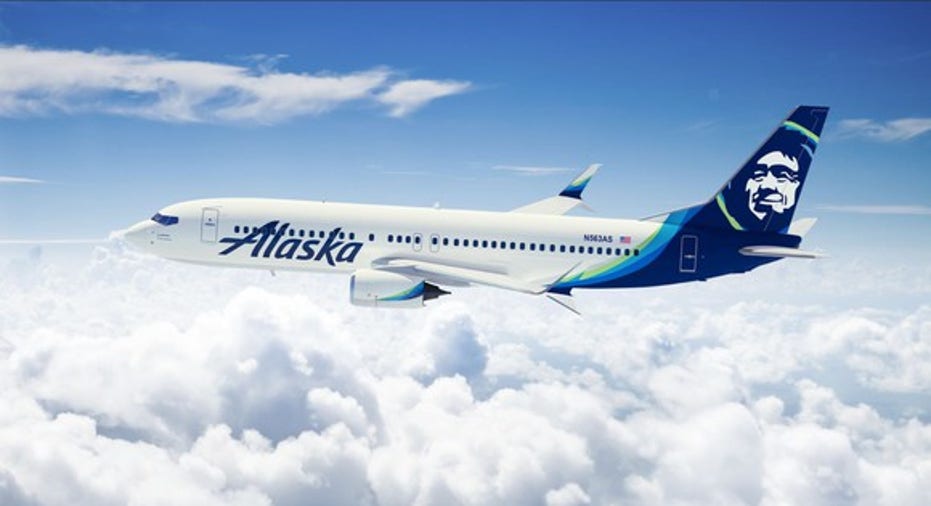Alaska Air-Virgin America Merger Update: More Synergies, but Later Than Expected

It's been a year since West Coast-focused airline Alaska Air (NYSE: ALK) announced that it would acquire its smaller rival Virgin America for $2.6 billion. After a series of delays, the landmark deal finally closed in December.
Alaska Air has now begun the integration process in earnest. That has included digging deeper into the numbers to refine its synergy targets. Last week, at the company's investor day, Alaska Air executives shared some of their new expectations for the merger. The big takeaway was that there will be more synergies from the merger than initially planned -- but they will take longer to arrive.
Alaska Air explains its revenue goals
As is the case for most airline mergers, revenue synergies account for the majority of the expected gains from the Alaska Air-Virgin America merger. Cost synergies are significant, too, but on a smaller scale.
Alaska Air recently updated its merger synergy targets. Image source: Alaska Air Group.
For the investor presentation, Alaska's management highlighted seven different types of expected revenue synergies. However, they can be grouped into a few broader categories.
The growth of Alaska Air's route network is by far the most important of these. Linking up the Alaska Airlines and Virgin America route networks gives travelers more potential itineraries to choose from. Additionally, Alaska is leveraging Virgin America's strong position in California to add a variety of new routes. By late 2017, the combined carrier will offer nonstop service in more than half of the top 60 markets for travel from San Francisco. Lastly, this increased presence in California will drive higher customer loyalty and more signups for the lucrative Alaska Airlines co-branded credit card.
Better utilization of the Virgin America fleet represents another major synergy driver. This entails adding more premium seats to its A319s and A320s and switching to Alaska's larger 737-900ERs for long-haul transcontinental flights, with the smaller A319s and A320s picking up the slack on shorter north-south routes.
Alaska Air also described two smaller revenue synergy sources. First, it will introduce cargo service on Virgin America's fleet. Second, the combined carrier will make better use of Alaska Airlines' partnerships with international airlines, because San Francisco is a bigger hub for international flights than Seattle.
New synergy targets
In total, Alaska Air's management now estimates the revenue synergies at $240 million, up from an initial target of $175 million. The company did not specify precisely how much comes from each individual revenue synergy category, though.
The Virgin America acquisition opens up huge earnings growth opportunities for Alaska Air. Image source: Alaska Air Group.
The company has also increased its cost synergy target from $50 million to $60 million, despite identifying some "dis-synergies" -- areas where it needs to spend more to bring Virgin America up to Alaska Air's corporate standards. (For example, Virgin America still uses a Gmail-based system for its corporate email.) Cost synergies will come from lower overhead, higher asset utilization, and increased purchasing power.
Thus, Alaska Air now expects total merger synergies of $300 million, up from its initial estimate of $225 million. However, management has realized that most of the synergies will flow through after the two airlines merge onto a single FAA operating certificate and begin using a single reservation system. The latter milestone won't be reached until late 2018.
As a result, Alaska Air now projects that it will get just 15% of the total synergy benefits by 2018. The vast majority of the synergies are now expected to show up in 2019 and 2020. By contrast, Alaska originally expected to realize 65% of the total synergies by 2018.
Investors should be patient
Alaska Air shares have steadily fallen since the company's investor day last week. This may indicate that investors are disappointed by the slow pace of projected merger synergy gains.
This could be a good buying opening for patient investors. Alaska Air has plenty of organic growth opportunities ahead, which should drive steady revenue and earnings growth in the coming years. Merger synergies represent an incremental source of profit that could accelerate Alaska's earnings growth beginning in 2019.
Right now, Alaska Air stock trades for less than 11 times its projected 2018 earnings. That's surprisingly low, considering that most of the merger synergies will land later on. If Alaska's management can pull off a successful integration process, the company's profits -- and stock price -- should march higher over the next four years or so.
10 stocks we like better than Alaska Air GroupWhen investing geniuses David and Tom Gardner have a stock tip, it can pay to listen. After all, the newsletter they have run for over a decade, Motley Fool Stock Advisor, has tripled the market.*
David and Tom just revealed what they believe are the 10 best stocks for investors to buy right now... and Alaska Air Group wasn't one of them! That's right -- they think these 10 stocks are even better buys.
Click here to learn about these picks!
*Stock Advisor returns as of April 3, 2017
Adam Levine-Weinberg owns shares of Alaska Air Group. The Motley Fool has no position in any of the stocks mentioned. The Motley Fool has a disclosure policy.